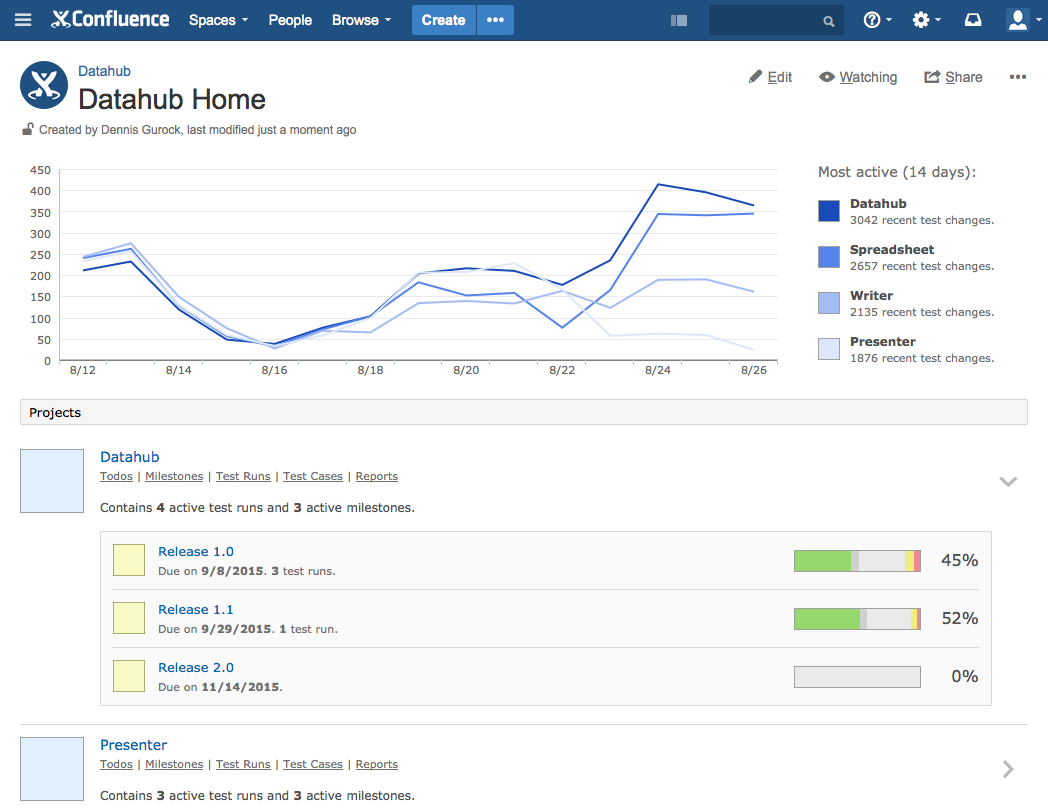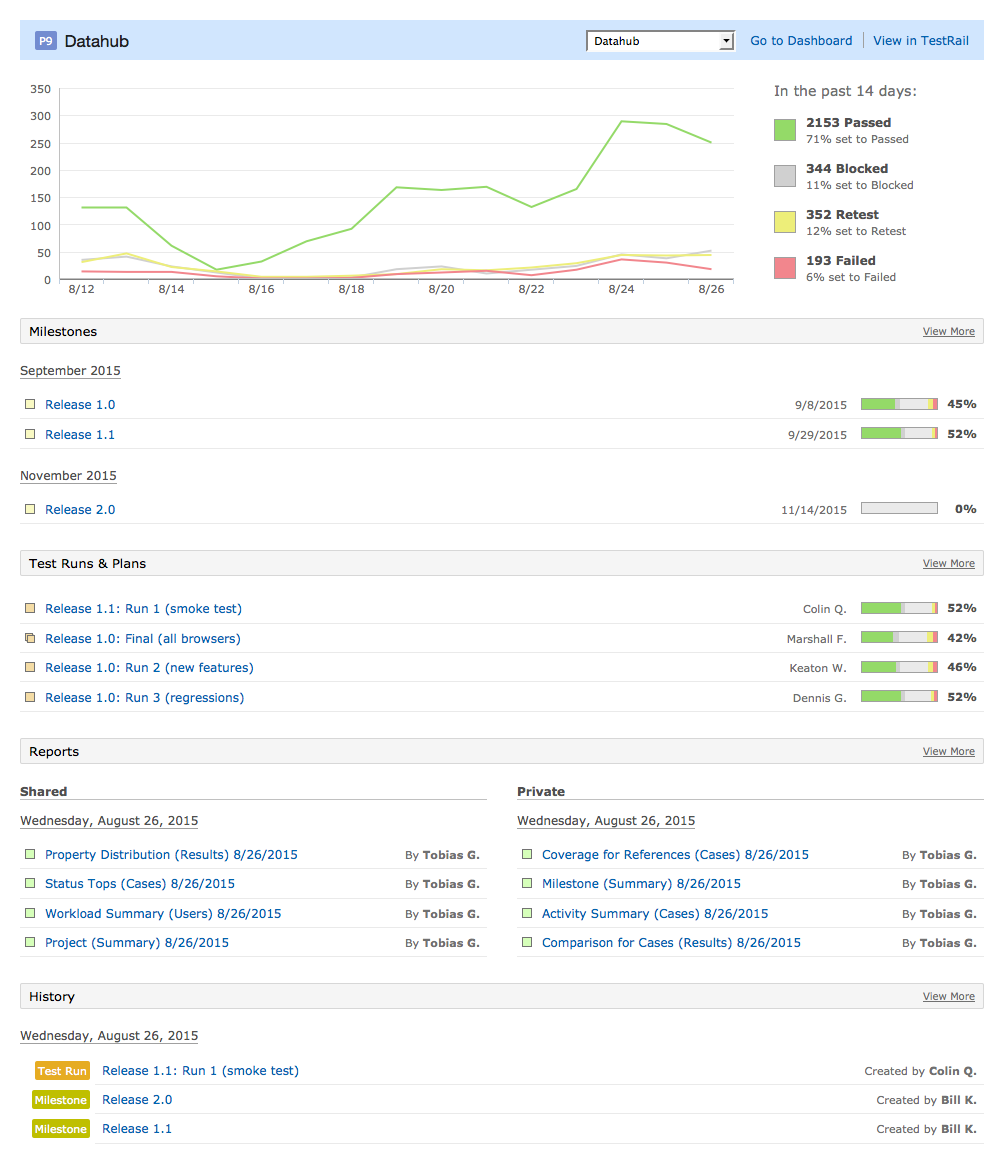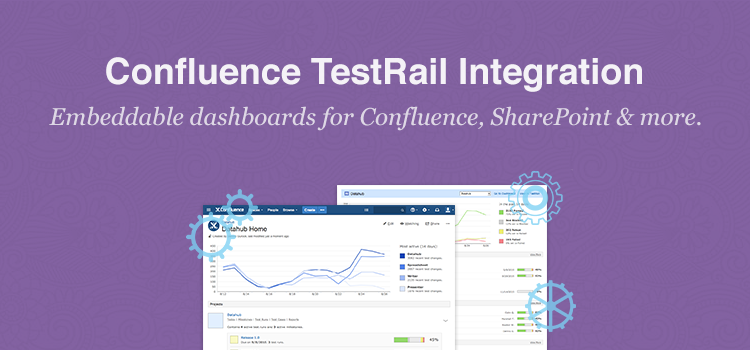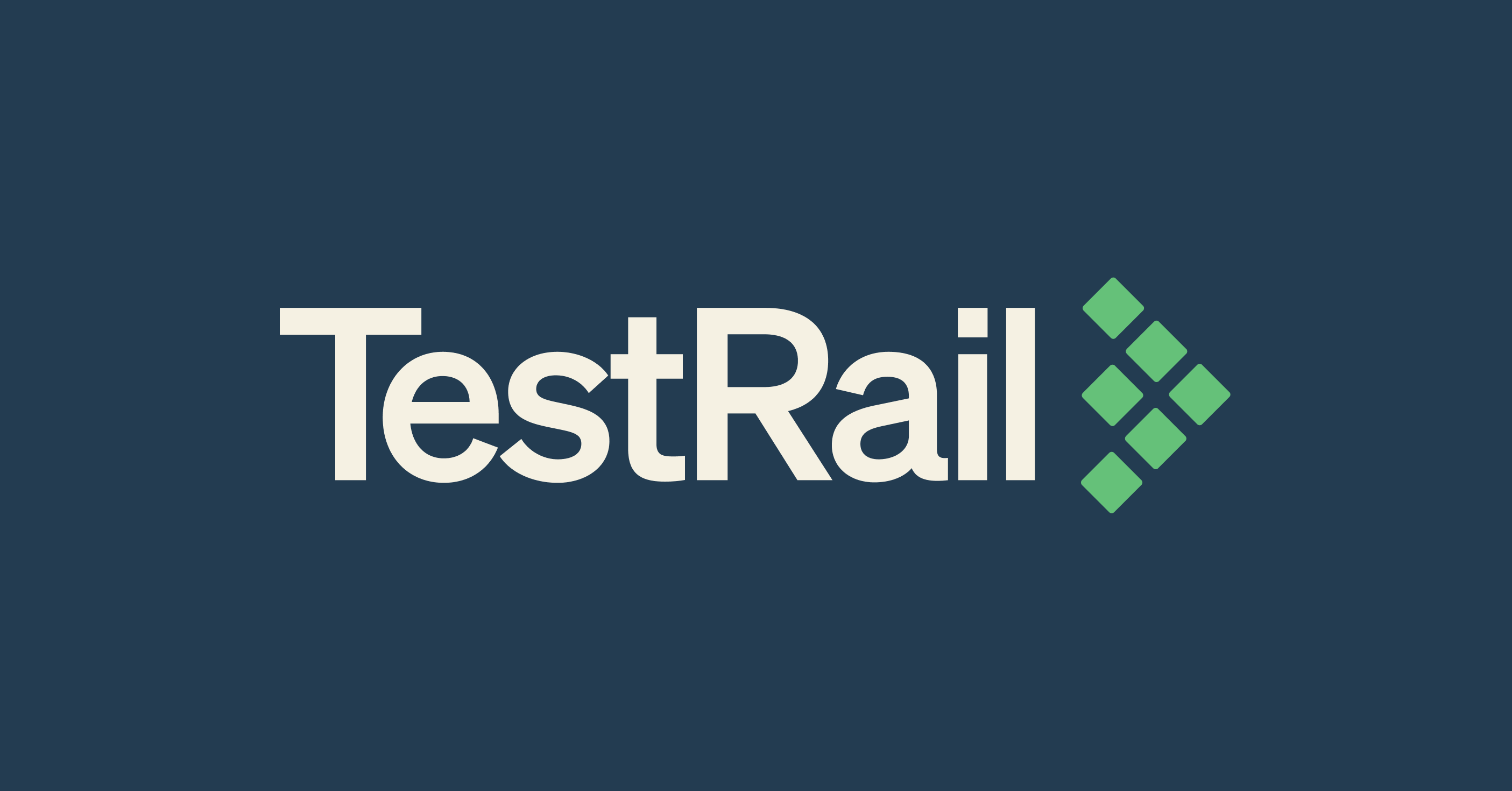With our recent TestRail 5.0 release we announced the launch of our all-new JIRA test management integration and add-ons, along with many new features for our existing integration with tools such as Redmine, FogBugz, Bugzilla and more. But we also announced a new dashboard and report integration to make it easier to view TestRail metrics in Confluence, SharePoint and other tools. This post explains how to use the new dashboard integration and how to benefit from the live metrics in any wiki, intranet or reporting tool.
When we designed TestRail 5.0, we reviewed the best options to make it easier to integrate TestRail reports and metrics with other tools. We regularly receive requests from customers asking about integrating statistics in Confluence, SharePoint, intranet portals etc. So in addition to our existing issue, defect and test automation integration for TestRail, we are also making new Embeddable Dashboards available. Now any application that can embed external pages, e.g. via iframes or similar, can easily integrate TestRail’s dashboards. This makes it easy to:
- View TestRail’s dashboard from Confluence
- Review project statistics and recent activity
- Jump to TestRail from dashboards to look up details
- Integrate the same reports in SharePoint and intranets
- Enable the entire team to stay up to date on testing progress
- Add rich TestRail metrics with any tool using iframes
Confluence Test Management Integration
Many teams use TestRail together with JIRA and Confluence for their project management, software quality efforts and related documentation. In addition to our existing JIRA and test automation integration, our new embeddable dashboards allow you to embed TestRail metrics and project overviews in Confluence Cloud and Confluence Server instances. As TestRail’s embeddable dashboards provide various arguments and parameters to influence the look and feel of the embedded pages, TestRail’s metrics can be added to Confluence seamlessly.
TestRail provides two embeddable end-points for the main TestRail dashboard and additional project overview pages. All embeddable dashboards load additional details dynamically and allow you to jump to TestRail to access linked projects, test runs, reports, test suites and more. You can learn more about adding our embeddable pages for Confluence test management integration for Cloud and Server in our documentation.

Embeddable dashboards for Confluence, intranets and wiki applications
SharePoint, Wiki and Intranet Tools
Other applications such as SharePoint, wiki tools, intranet portals or reporting systems can also use the embeddable dashboards via simple iframes. Any application supporting iframes or HTML can use one of our end points to add the dashboards and project statistics.
Here are a few pointers to external websites documenting how to embed iframes and external pages in various applications. Please verify the instructions on a staging server if you are unsure, as we haven’t tested all of the described options. Please refer to our integration documentation for a full reference of options and URLs.
- Adding and using iframes in SharePoint
- Iframe extension for MediaWiki (Wikipedia software)
- Enabling iframe tags in MindTouch
- Embedding iframes and videos in Jive

Embed rich project statistics in any tool supporting iframes or HTML
Requirements for Dashboard Integrations
The new embeddable dashboards are useful to add TestRail statistics to any tool that supports embedding external pages, including Confluence, SharePoint or tools supporting HTML. For this to work with any modern web browser there are only a few requirements that you need to follow:
- Access protocol: modern web browsers ensure that pages provided via HTTPS also need to embed and reference resources via HTTPS. For the embeddable dashboards this means that if Confluence or SharePoint (or other host applications) is using HTTPS, then TestRail also needs to be using HTTPS. Otherwise HTTP would be fine, but using a secure connection is recommended in general.
- TestRail login: any user viewing embeddable dashboards still needs to have a login for TestRail and needs to be logged in. The reason for this is that any page still needs to be protected and secured and each person using or accessing TestRail requires a login. If a user is not logged in, TestRail would simply show a small login button or link instead of the dashboard.
If you are already using TestRail, then simply following our documentation to enable the integration in Confluence and our generic integration documentation is the best starting point. If you are new to TestRail you can simply try TestRail free for 30 days and getting the integration configured only takes a few minutes.



